Wood For Vivariums
When thinking about wood for vivariums, can you use wood that you find outside for your bearded dragon or must you buy it from a store?
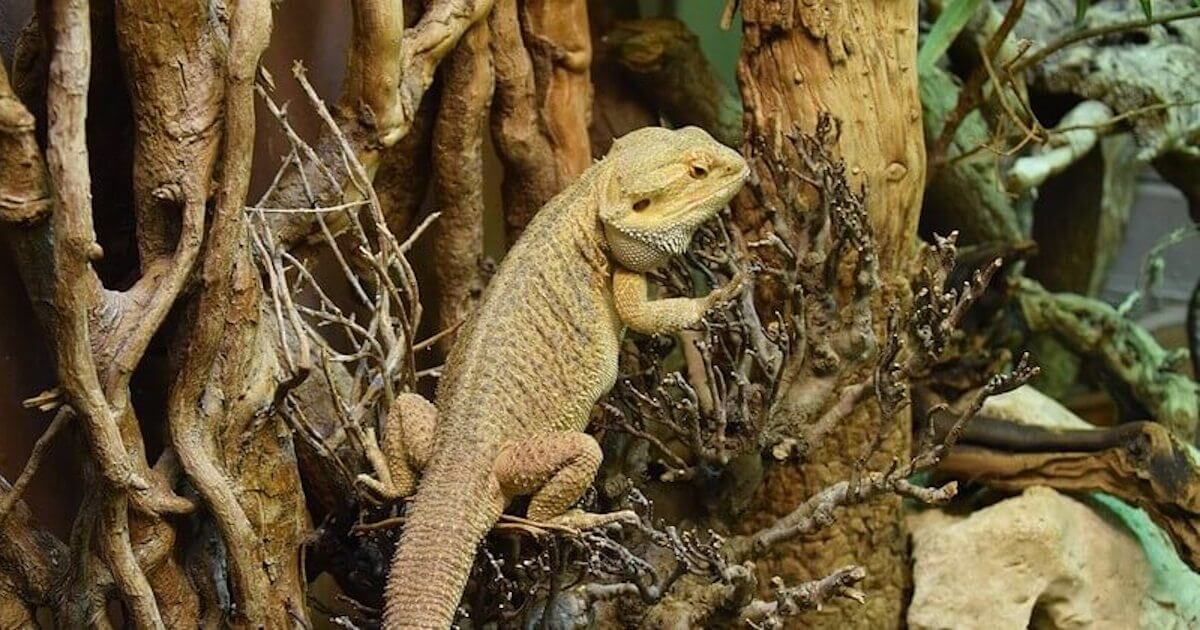
Last Updated: February 8th, 2023
By: Claire
Table of Contents
Wood for Vivariums – The Which Why and How?
If you are looking to add something different to the decor of your vivarium and board of the bog standard, over priced shop bought offerings. Then finding your own is the solution! It save yourself some money and if don’t mind spending some time foraging, you can find some truly unique pieces. Giving not just bearded dragons an unusual and interesting climbing branch or basking spot but any lizard or snake you may have.
You may have even walked through a park or forest and seen a log, branch or found a piece a of driftwood washed up on the beach and thought how cool it would look inside your vivarium or terrarium, but unsure if was safe to use. In this article we concentrate on which types of wood to avoid and what wood is safe to use. We also go through how to prepare the wood so it is parasite and bacteria free.
We don’t intend to determine which woods you might make a vivarium out of and it should be noted that treated wood (or more precisely, lumber) is a totally different risk profile.
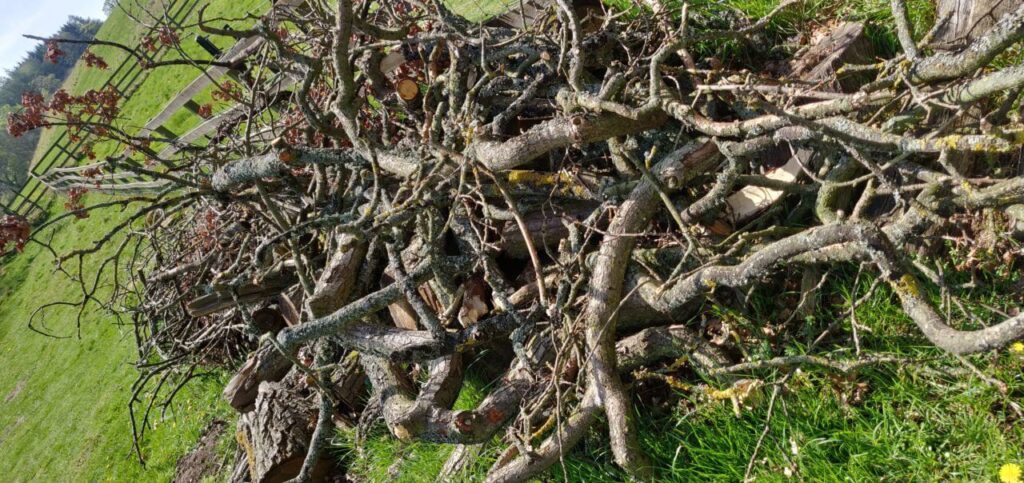
Which Wood Is Safe for Use in A Vivarium?
There are a wide array of wood that are safe to use in your vivarium. Below are just some examples this is not an exhaustive list.
- Oak
- Maple
- Birch
- Tulip tree / Magnolia tree
- Crepe Myrtle
- Apple tree
- Dogwood (Cornus floridana)
- Bog wood
- Driftwood
Why Is Driftwood and Bog Wood Safe?
It can be almost impossible to tell what type of wood (by eye at least) bog wood or driftwood is. It may be from a Cedar or an Oak – you probably won’t know.
But, does it matter what type of wood it is? The answer is no – and this is because driftwood and bog wood have been separated from the living portion of the tree for so long that any phenol’s are long since evaporated or washed away making it a safe wood to use.
Now you know that those potential chemicals are no longer a concern, the only issue left is parasites, bacteria or fungi. So, it is for this reason that you will still need to clean and sterilize bog wood or driftwood before using it.
Is There a Difference Between Bog wood and Driftwood?
The simple answer is YES…
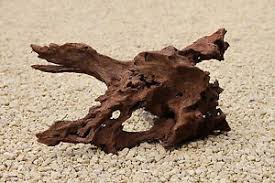
Bog wood derives from hard wood trees that have spent hundreds to thousands of years submerged in either lakes, rivers , swamps or bogs. They are dark in color due to the years of natural staining by organic matter. Bog wood is heavier and denser than driftwood.
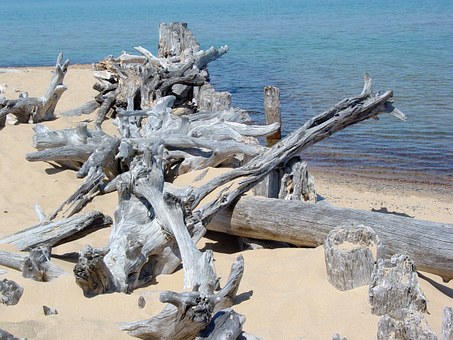
Driftwood is essentially any tree, branch or piece of wood that has been drifted out to sea and washed upon a beach. It is usually light in its color due to sun bleaching and natural weathering.
Which wood should not be used In a Vivarium?
There are several types of wood that you should avoid using inside in your bearded dragon vivarium and in any other lizard or snake enclosure you may have.
Woods to avoid are:
- Coniferous or evergreen wood. (eg. Pine, Cedar, Douglas Fir, Camphor wood).
- Eucalyptus.
- Wood with thorns (eg. hawthorn, honey locust, Acacia trees).
- Wood that has been chemically treated.
Why Are Some Woods Not Safe for Your Reptile?
Cedar, Pine, Douglas Fir
Some trees especially coniferous trees such as the Cedar, Pine and Douglas Fir produce a thick sticky resin that oozes from the tree, this is a protective mechanism against damage, disease or infestation. Prolonged contact with the resin can cause skin irritation and burns. Ingestion can make your reptile very sick and can prove fatal. Especially as many reptiles and snakes use their tongue to sense their surroundings.
These trees also releases aromatic phenol’s, which are a volatile organic compound and are mildly acidic. It has been reported that short term high level exposure to these aromatic phenol’s have been known to cause respiratory irritation, skin lesions and burns. Exposure has also been known to cause muscle twitching and tremors which can easily be mistaken for MBD. In extreme cases exposure can cause seizures and eventually death will occur if exposure continues.
Eucalyptus
Eucalyptus trees are well-known for their strong, pungent aroma. This distinctive smell is due to the presence of compounds called phenols. The most abundant phenol in eucalyptus trees is eucalyptol. The main purpose of these oils is to protect the trees from herbivorous animals and insect pests. The phenols in eucalyptus oils are thought to play a role in this protection.
Eucalyptus can be harmful to animals if ingested in large quantities. Causing liver damage and gastrointestinal problems. Eucalyptus leaves are also a known irritant to the skin and eyes. Reptiles are particularly susceptible to the effects of eucalyptus toxins,
Camphor
Camphor wood also referred to as camphor tree or camphor laurel, also an evergreen produces a strong menthol smelling oil that is extremely potent. And must be avoided. Camper oil is often used as insect repellent and is a key ingredient in moth balls.
Contact with camphor for humans can cause irritation, redness, and burning. It can also be poisonous if swallowed, and can cause seizures and even death in young children. Inhaling camphor can also irritate the lungs and cause difficulty breathing.
Cedar is the most toxic wood for your lizard and should be avoided at all costs. Pine, fir and eucalyptus do not have the same potency as cedar but all should be avoided and known safe options used instead.
Poor ventilation and and enclosed spaces will increase the exposure risk. There are many sites that state that that these woods and their compounds are safe to use around reptiles. We disagree, to put this in context low levels of synthesized phenols are used in your every day cleaning products including disinfectants and mouthwash.
Essential Oils For Bearded Dragons and Other Reptiles
It is also worth mentioning that cedar, pine, eucalyptus and camphor are becoming very popular as essential oils. The use of these oils around reptiles (and other pets) can have a detrimental effect on their health. Recent studies have shown that exposure to these oils can induce seizures and when the oils were removed the seizures stopped. If you are burning essential oils make sure the area is well ventilated and away from your vivarium.
Reports abound on the internet relating to sudden onset of dog seizures as a result of exposure to phenols from Eucalyptus oils and other essential oils around the home. Dogs have far more fresh air exposure than is likely inside your vivarium, even with excellent ventilation. I
Wood Which has Thorns
Any branches or logs that has thorns, spikes or needles should also be avoided. They have a high potential to cause unnecessary injury to your lizard or snake. These include (but not limited to);
Hawthorn, Honey Locust, Acacia, Aiphanes Minimas, Devils Walking Stick and Peach Palm.
Chemically Treated Wood Is Not Safe For Reptiles
Any wood that has been chemically treated should also not be used in your lizard’s enclosure, simply because they have previously been treated with chemicals including VOCs such as creosote or acetone that may not be safe for reptiles.
How to Prepare Branches and Wood for Use In a Vivarium
Once you have sourced a branch or piece of wood that you want to used in your lizards vivarium, it will need to be made safe before use.
- Ensure the wood has no sharp edges (these can be sanded smooth) or holes where your reptile could get stuck. Avoid wood that it has started to rot.
- Remove any loose bits including bark and leaves. A wire or hard brush works well for this.
- Wash / soak the wood in 20% bleach solution this will help to remove any moss, lichen, fungus and bacteria that may be on the wood. Rinse thoroughly.
- You will then need to bake the wood in the oven for at least 30 minutes at 130 degrees or 260 Fahrenheit. This process will kill of any parasites and remaining bacteria. Allow to cool before handling.
- If your oven is not big enough for your chosen piece of wood, another option is to deep freeze the wood. Chest freezers are ideal for large branches. The down side to freezing is the process takes longer. Ideally you will want to leave the wood in deep freeze for at least a week if not longer to ensure it kills off all nasties. The wood will need to thaw and dry before use.
- Your piece of wood is now safe and ready to use as decor in your vivarium or tank.
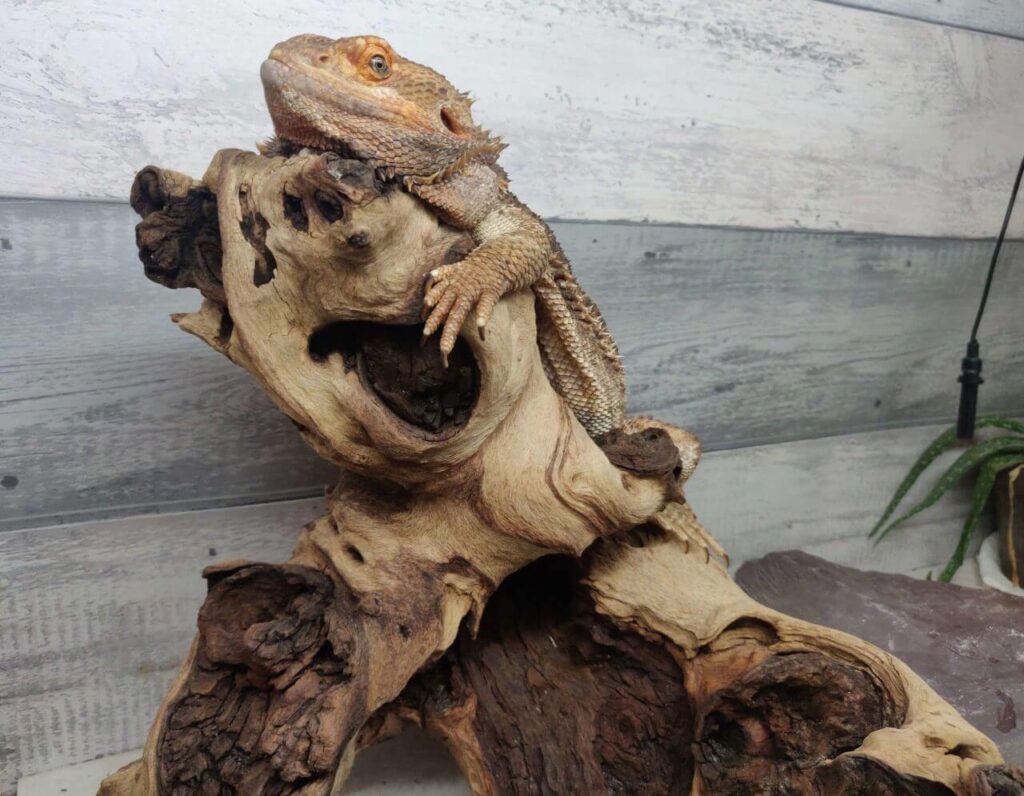
Finding Your Own Basking Rock
A good basking rock is often expensive to buy and will be the same as as many others. Why not make your beardies vivarium even more unique by adding a basking rock you have sourced your self!
The same principles apply to to rocks as they do for wood:
- Size is important – make sure it is not too large / high for the enclosure.
- No sharp edges – If your chosen rock has sharp or rough edges you will need to smooth them down with a file or rasp. This will avoid unnecessary injury to your beardie.
- It will need to be meticulously cleaned – Remove all dirt including any moss, fungus and lichen. Wash with a 20% bleach solution and rinse thoroughly.
- Sterilise your rock – It is not advisable to put rocks in the oven at high temperatures, there have been incidences of some types of rock exploding due to air pockets expanding within them. Instead soak the rock for a few hours in a diluted bleach solution and rinse thoroughly. This process will kill of any remaining parasites and remaining bacteria. You can also spray with reptile friendly antibacterial spray and leave to air dry.
- Placement of the basking rock – Take care when placing the basking rock in the enclosure, the rock must be sturdy and stable you don’t want the rock to fall over and injure your bearded dragon.
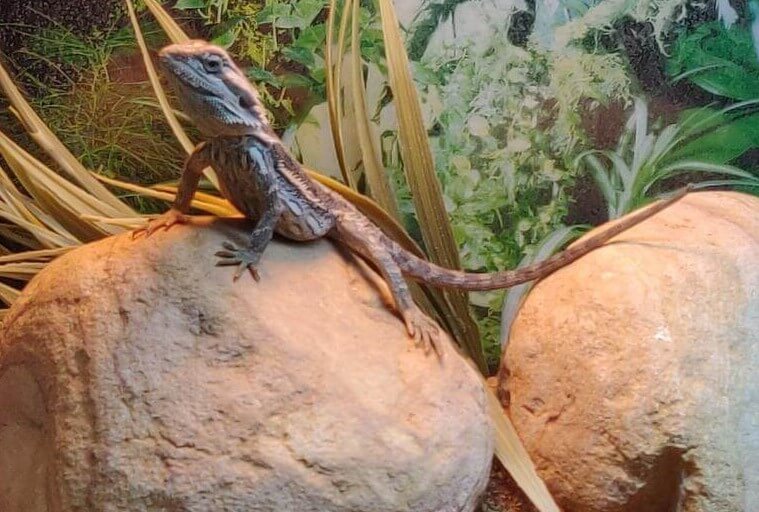
Hope you have fun and save some money too!!
We would love to see your unique habitat creations!!
If you’ve enjoyed this post please feel free to share it with your friends using the buttons below. If you have any comments, questions or other feedback please let us know using the comment form below.
Thanks for reading!
Thanks for reading! 😊
